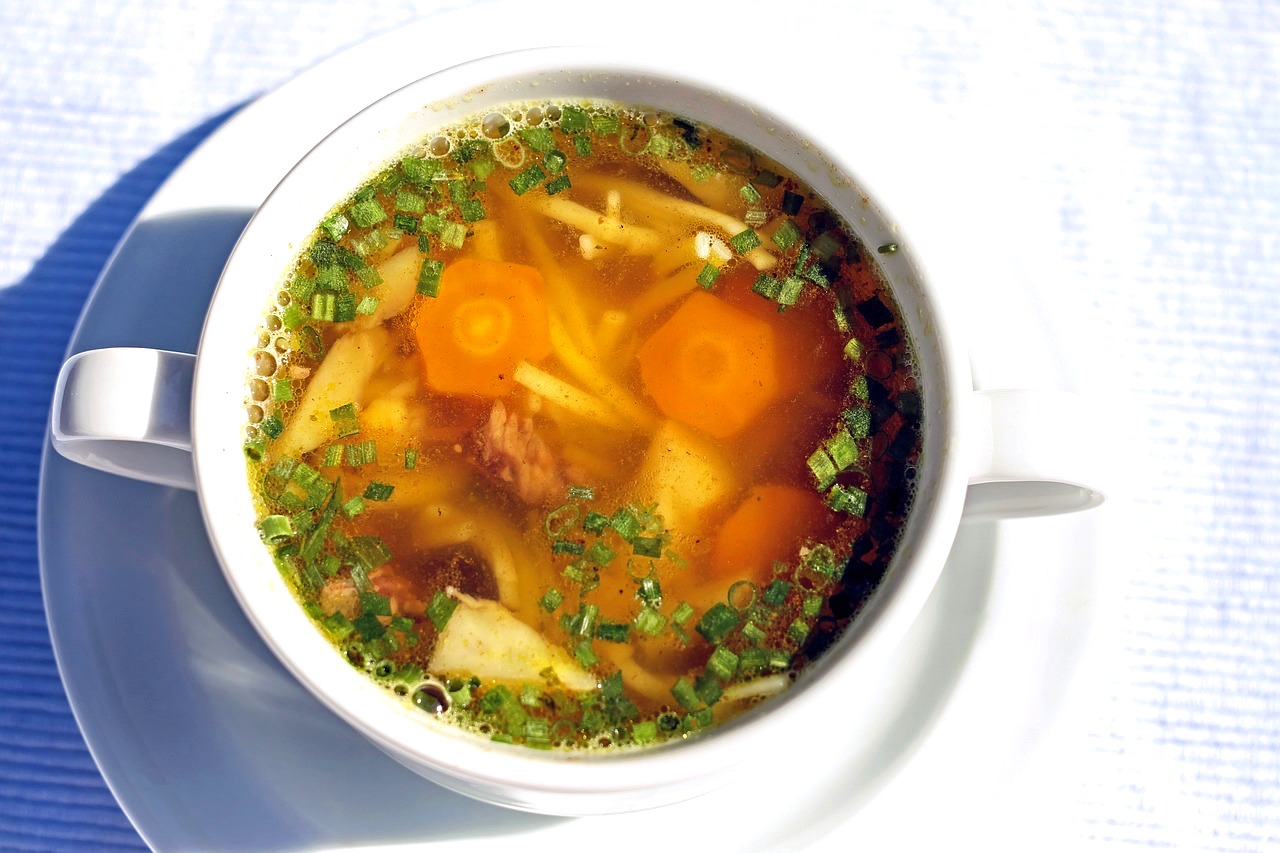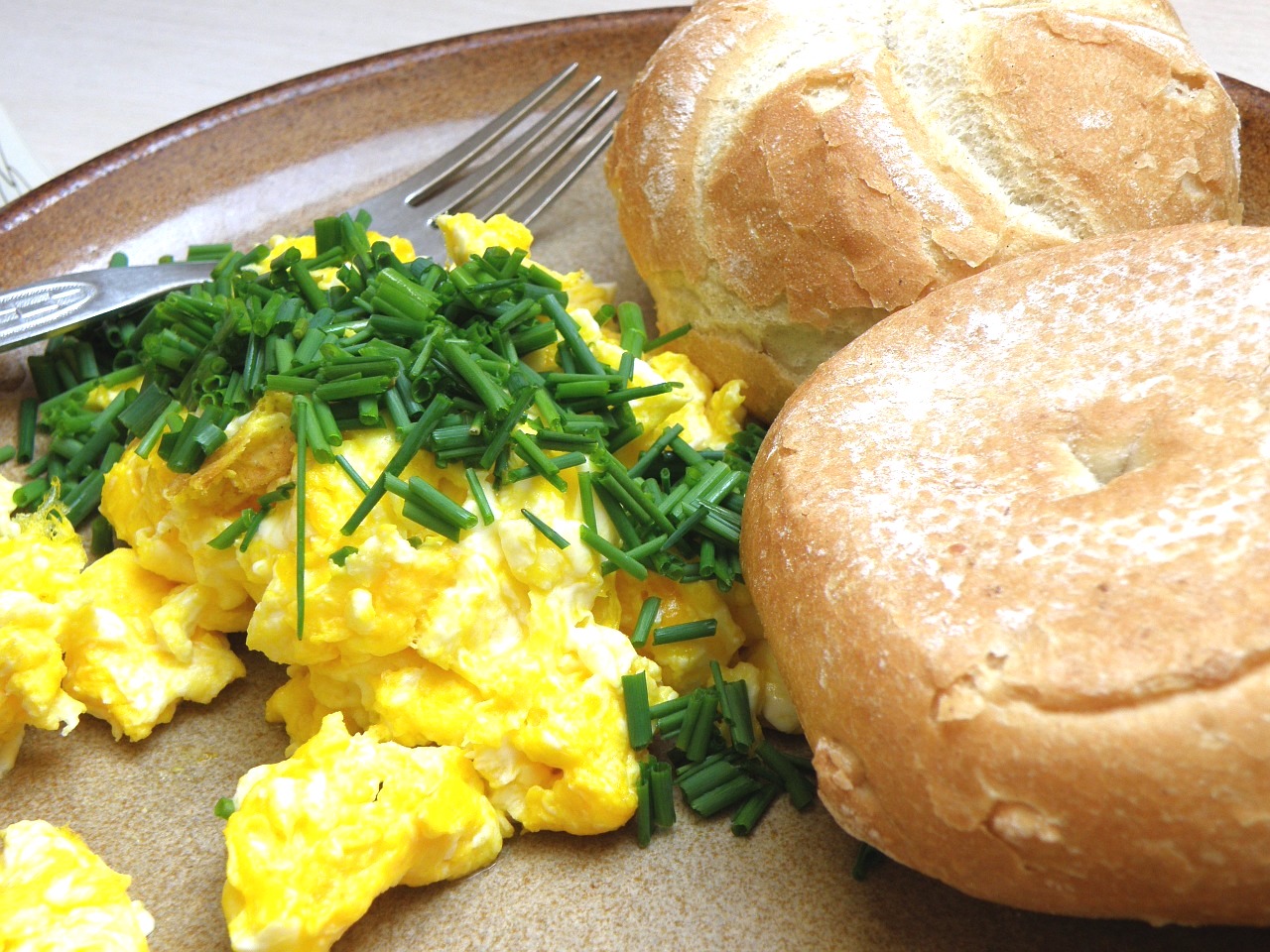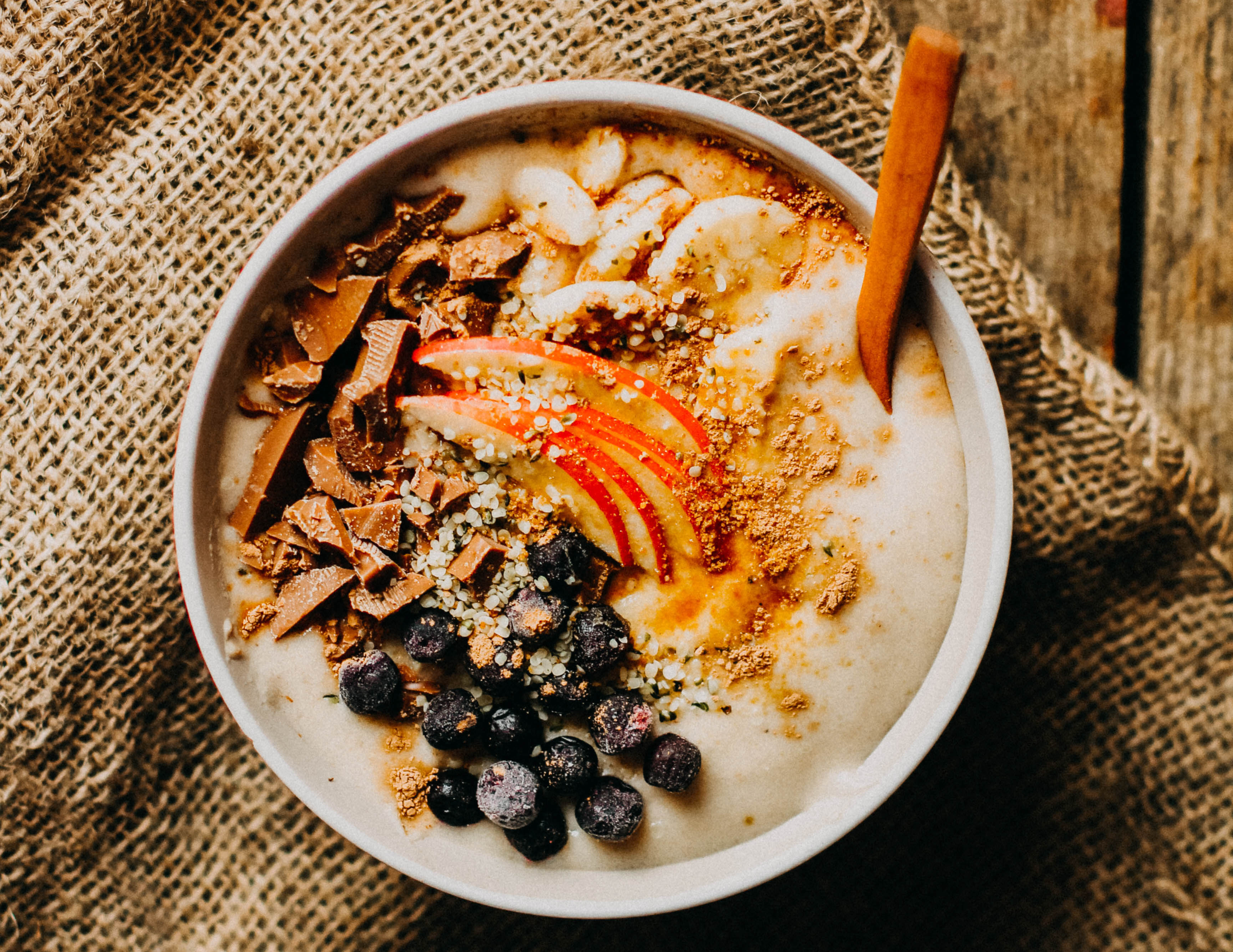I like to start the day with warm lemon water, or hot ginger tea. But THEN what?
Decisions, decisions.
And conflicting opinions, conflicting opinions…
One reason you see such different recommendations about how to eat is that there are lots of ways to eat that work.
What’s best for you depends on your preferences, the time of year, your health, and your constitution. If you’re confused about what to put (or whether to put ANYTHING) in your belly first thing in the morning, here are three bites of wisdom from Chinese medicine to help you out.
1. We have the most qi (“chee,” or functional energy) in our digestive systems in the morning, between about 7 a.m. and 11 a.m.
Morning is a good time to eat! That’s when we have the qi to make the most out of our food, so it’s a great time to have a complete meal. This means veggies get a starring role, and the cast is rounded out with support from protein and starch.

At this time of year, my favorite way to do this is a breakfast soup. It’s pretty easy. I put some leftover yummy stuff in a pot. (Whatever I find in my Snapwares: my latest veggie medley, some roasted sweet potatoes, a ground turkey hash.) Then I pour broth over it. Packaged stock works, or, when I’ve got it, bone broth I slow-cooked the weekend before. I warm it all up, and I savor it.
At the other end of the day, dinner-time, Chinese medicine wisdom says we have less qi for digestion. Our bodies need to finish off digestion well before they prepare for sleep. If you’re going to eat one lighter meal in your day (or skip one, for the intermittent fasters reading this), evening is the best time for that. A recent study echoes this ancient advice. Researchers found that eating closer to bedtime was associated with poorer metabolic health, no matter what or how much the participants ate.
2. It’s good to eat warm. Or, at least, eat not-cold.
In the Chinese Medical understanding of the body, our digestive system is like a soup pot itself, warming and softening everything up so that we can break it down and absorb what we need.
We’re not supposed to cool the soup pot down with cold food or drinks. (This is why your acupuncturist friends always ask for “water with no ice” when you eat out.)
In addition to the physical temperature of your food, there’s the “thermal nature” of your food. That’s the effect it has on your metabolism. You’ve probably felt it: ginger is warming, mint is cooling. Onions warm us, cucumbers cool us down.
Fruit tends to be cooling, as do most green veggies. If I choose a smoothie to get my complete meal at breakfast (starring fruit, with powdered greens, acerola cherry, and collagen protein blended in), I let it come to room temperature before I drink it, or even gently warm it up. You can also warm up a smoothie’s thermal nature by sprinkling in some cinnamon or ginger.
3. Check your breakfast favorites for triggering foods.
There is nothing wrong with a piece of buttered toast, scrambled eggs, yogurt, and a cup of coffee with cream – as long as there’s nothing wrong with them FOR YOU.

This might not be welcome news, but it’s the truth: most people I work with feel less well when they eat at least one of those items. Some people feel worse when they eat any of them.
Now, there are those rare people who don’t notice any change in their symptoms or inflammation levels when they eat all the gluten, dairy, eggs, corn, soy, etc. that they want. If that’s you, you’re fortunate! Those are all nutritious foods. Carry on. Enjoy your breakfast.
But if you’re struggling with any health issues or looking to optimize your health and resilience, you can consider following a cleansing, anti-inflammatory elimination diet for a few weeks. You might be amazed by how different you feel. When you systematically reintroduce the commonly triggering foods (like gluten, dairy, and eggs), you can identify which ones bring you trouble, and keep them off your plate.
To sum it up:
1. For breakfast, eat something, or drink a smoothie. Aim for a richly nutritious meal. (If you want to eat less at one end of the day, opt for dinnertime.)
2. Eat or drink your breakfast at room temperature or warmer.
3. Keep any triggering foods off your plate. Fill it up with the things that nourish you best.
Here’s wishing you delicious, healthy, grateful breakfast-times. What a blessing to be able to eat in plenty, to know which foods help you heal and thrive, and to have access to the foods that are best for you.
Originally published on healgrowthriveflow.com



